What is TB and how is it transmitted?
Tuberculosis (TB) is a chronic, primarily respiratory infectious disease of mammals caused by a group of closely related bacteria known as the Mycobacterium tuberculosis (MTB) complex. This group includes:
- M. bovis – responsible for TB in cattle (bovine TB) and other mammals, including occasionally people. Cattle are the natural host of M. bovis, but nearly all warm-blooded animals, including goats, deer, pigs, camelids, sheep, cats and badgers are susceptible to the infection. This broad range of animal hosts complicates the eradication of bovine TB.
- M. tuberculosis – the primary cause of TB in people, which rarely causes disease in animals.
- M. caprae – an additional causative agent of TB in wild deer in continental Europe.
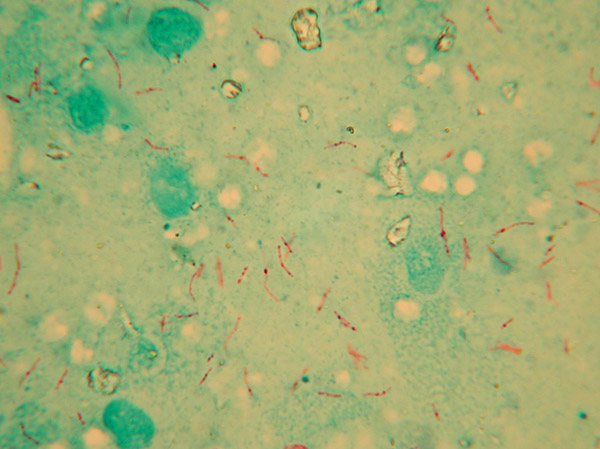
This guidance is mainly concerned with TB in deer caused by M. bovis and all further references to ‘TB’ denote the disease resulting from infection with M. bovis. Deer are susceptible to M. bovis and can develop lesions and clinical signs of TB. In Great Britain (GB) deer are generally regarded as spillover hosts. This means they can become infected only when the challenge level is relatively high, and they do not usually sustain the infection within their own populations in the absence of infected cattle or a wildlife reservoir.

TB incidents in farmed deer herds in GB are infrequent. The infection can spread either directly (animal to animal) or indirectly via materials contaminated with the secretions or excretions of infectious animals. This can include contact with:
- infected cattle and other domestic animals (e.g. sheep, goats, camelids)
- wildlife reservoirs of infection (e.g. badgers and, potentially, wild deer)
- contaminated, pasture, equipment, feedstuffs, water and slurry
A small number of laboratory-confirmed incidents of TB are reported every year in farmed deer herds in GB, although unlike bovines (i.e. cattle, farmed water buffalo and farmed bison) there is no routine TB testing programme for deer farms. Official statistics relating to TB in farmed deer (and other non-bovine livestock species) in GB are published on GOV.UK.
Infection with M. bovis in deer is also a zoonosis, meaning that it can be naturally transmitted from vertebrate animals to humans, although the risk of deer-to-human transmission of M. bovis is considered to be very low, with no cases ever documented in GB so far.
Farmed deer
For disease control purposes, deer are defined in domestic TB legislation as deer of any species that are managed by a keeper, including those managed on enclosed park land. Farmed deer are captive (usually red) deer that are commercially bred and reared for venison production and, as a result, tend to be more closely managed and subject to more frequent handling by their owners/keepers than park deer. In GB, farmed deer must be identified if they are to be tested for TB or leave the holding of origin. In England, the identification tag must show both the Defra or the British Deer Farms and Parks Association (BDFPA) herd registration number and the animal’s own unique number.

Signs of TB in deer
M. bovis infection is usually chronic (slowly progressing), insidious and, because its clinical signs are not specific, it is difficult to diagnose in deer by clinical examination alone. There is no routine surveillance TB testing of farmed deer herds in GB. Therefore, most incidents of TB in farmed deer are initially detected through post-mortem surveillance, i.e. by identification of suspicious lesions of TB in deer carcases during post-mortem meat inspection in the slaughterhouse, or post-mortem examination in a veterinary diagnostic laboratory.
Actions when M. bovis is suspected in farmed deer

TB in farmed deer is a notifiable disease in GB, which means there is a legal obligation to report suspicion of disease. In England and Scotland, if, following a clinical or post-mortem inspection or examination, a live farmed deer or carcase is suspected to be infected with TB, the Animal and Plant Health Agency (APHA) must be notified without delay by the person who has raised the suspicion.
In Wales, TB is only notifiable in a farmed deer carcase or following identification of M. bovis by laboratory examination of samples taken from the animal.
APHA will then place movement restrictions on the whole deer herd, or part of the herd, by serving a legal notice on the keeper known as ‘TD02’ or ‘TN02’. In Wales, additional movement restrictions may also be applied on other TB susceptible species present on the holding. In all cases, movement restrictions will remain in place until APHA is satisfied that the suspicion of TB is ruled out or that all TB infected animals have been identified and removed.
PCR testing of suspect TB lesions in farmed deer carcases
APHA routinely uses polymerase chain reaction (PCR) testing on tissue samples collected at post-mortem inspection as the primary test to confirm or negate suspicion of M. bovis infection in farmed deer carcases.
The PCR test reduces the time taken by the APHA laboratory to confirm whether M. bovis is present in tissue samples. This means that in certain situations (i.e. slaughterhouse cases), if PCR test results are negative and check testing of the herd has been completed with negative results (where required), APHA can lift herd movement restrictions sooner than when previous laboratory protocols based on bacteriological culture were in use (which typically took 6-22 weeks to complete). If the PCR test results are positive, APHA can inform the keeper and their private vet quickly, so that further action can be taken as soon as possible to control TB in the affected herd.
Actions when M. bovis is confirmed in a farmed deer herd
APHA will undertake a veterinary risk assessment when M. bovis infection has been confirmed by PCR testing (or bacteriological culture) in a farmed deer herd to determine the appropriate TB testing protocol and other actions. These will include movement restrictions and likely a combination of slaughterhouse investigations, tuberculin skin testing, supplementary antibody testing (England only) and tracings.
Blood samples for antibody testing may be taken from live deer or at slaughter. Two consecutive skin tests of the herd, completed at minimum intervals of 120 days with negative results, are required to lift movement restrictions. Skin and blood testing in this scenario is government-funded.

Skin testing of farmed deer

The tuberculin skin test is commonly used whenever TB screening of live farmed deer is required. This involves a comparative test, injecting a small amount of avian and bovine tuberculin (a sterile, purified mixture of proteins extracted from cultures of M. bovis) into the deep layer of the skin in the middle of the neck. The skin is first clipped and the thickness of the skin fold measured in millimetres using special callipers before the tuberculin is injected. After 72 ± 4 hours, the vet returns and re-measures the skin at the site of the injections to determine if the animal is classified as a reactor, inconclusive reactor or negative (pass). The standard operating procedure for official veterinarians carrying out tuberculin skin testing of farmed deer is available on the APHA Official Veterinarian Instructions.
Where skin testing is considered impractical or inappropriate, alternative surveillance methods to determine the TB status of a farmed deer herd may be considered, such as surveillance through post-mortem examination at a slaughterhouse. However, this will most likely significantly extend the time that the herd is under movement restrictions.
Farmed deer contiguous to (or present on) premises that are affected by a TB breakdown in other species
APHA will normally require skin check testing of farmed deer herds that happen to be next to (or co-located on) premises affected by a lesion- or laboratory-confirmed TB breakdown in bovines (i.e. cattle, farmed water buffalo, or farmed bison), or M. bovis infection in other (non-bovine) farmed animals such as goats, camelids, pigs or sheep.
When cattle on a farm are under movement restrictions for a TB breakdown and APHA considers that there is a risk of infection spreading from cattle/badgers to other livestock on the same premises, a notice may also be served to contain other farm livestock, including farmed deer. The notice may restrict livestock into a defined part of the premises, away from the cattle and prevent the movement of these animals to other holdings. In England and Scotland, APHA will not normally restrict the movements of such contiguous or co-located herds of farmed deer unless justified by a veterinary risk assessment, e.g. when farmed deer have been housed in close contact with infected cattle in a building with a shared airspace for a prolonged period, or when the required skin check test becomes overdue.
Tracings
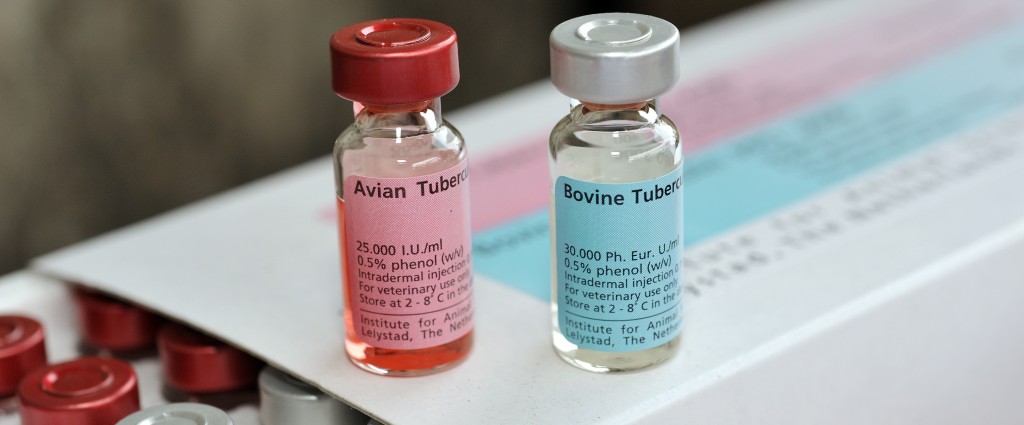
APHA will consider, on a case-by-case basis, whether farmed deer that may have been moved out of an infected herd to another herd before the application of TB movement restrictions may need to be traced and tested at APHA’s expense. Source (back) tracing investigations and skin check testing of the herd(s) of origin of purchased TB-infected farmed deer may also be undertaken.
Removal of TB test positive deer
In the event of positive skin and/or blood (antibody) test results, APHA will:
- arrange and meet the cost of haulage and slaughter of the test positive deer (reactors) and any direct contacts (DCs)
- arrange and meet the cost of post-mortem examination (PME) of the reactors and any DCs and laboratory testing (PCR or culture) of samples where appropriate
- allow private slaughter if the owner wishes (in this case the owner will meet the costs of haulage and slaughter).
Post-mortem images of TB in deer
Lesions of TB in deer are primarily found in the lungs and lymph nodes of the head, thoracic cavity (chest), liver and abdomen. Lesions are white, cream or yellow in colour and may be calcified (gritty).
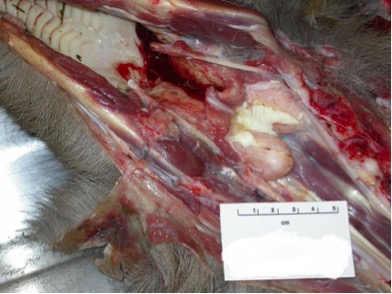
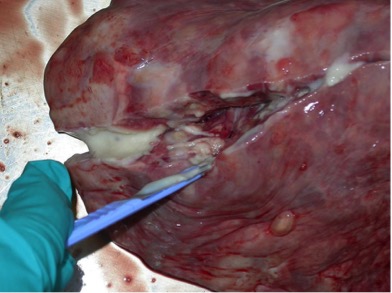

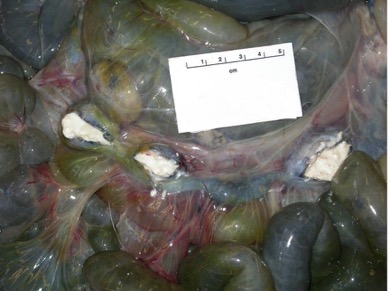


Compensation for compulsorily slaughtered farmed deer
There is legal provision for the government to pay compensation to keepers for farmed deer that are identified as TB reactors or DCs and require compulsory slaughter. Compensation rates are determined under the relevant domestic legislation for each country:
- In England, the Tuberculosis (Non-bovine animals) Slaughter and Compensation (England) Order 2017
- In Wales, the Tuberculosis (Wales) Order 2011
- In Scotland, the Tuberculosis in Specified Animals (Scotland) Order 2015
In England and Scotland, statutory compensation payments for farmed deer which are compulsorily slaughtered by APHA for TB control reasons are:
- £1500 for a working stag
- £400 for hind and young stock
In Wales, compensation for farmed deer slaughtered due to TB is £400.

Keepers of farmed deer in GB can arrange for private slaughter of the animals if they wish. In such cases, they will forgo the statutory compensation payments, but will retain any salvage value of the carcases. Additionally, APHA will not accept responsibility if the carcase is condemned and will not pay compensation or any privately arranged haulage retrospectively.
Free biosecurity advice for keepers of farmed deer in England

The TB Advisory Service (TBAS) provides free, bespoke advice about practical, cost-effective measures to build herd/flock resilience to TB through on-farm advice visits and telephone advice. Keepers of farmed non-bovine animals across England are eligible for free advice from TBAS.
Keepers of farmed deer can request a free one-to-one visit with an experienced veterinary advisor, who will provide bespoke recommendations to reduce the risk of TB infection for herds. Contact TBAS via email at info@tbas.org.uk or over the phone on 01306 779410 to book your free advice visit.

Useful resources
- Defra guidance on managing TB in non-bovine animals, including movement restrictions and compensation
- Guidance on managing TB in non-bovine animals in Wales and Scotland
- Defra routinely publish statistics on cases of TB in non-bovine species in Great Britain based on information collated by APHA